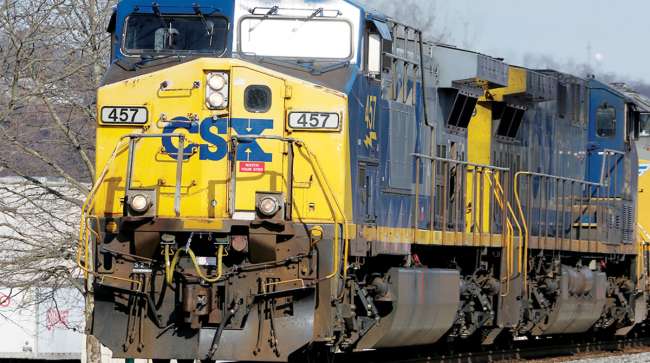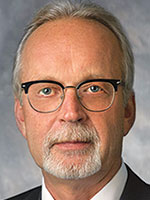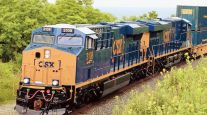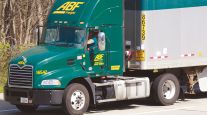Senior Reporter
CSX’s Q3 Earnings Beat Street Expectations

CSX Corp. announced third-quarter earnings that beat Wall Street analysts’ expectations. The Jacksonville, Fla.-based Class I railroad's net income rose 32% to $968 million, or 43 cents per share, compared with $736 million, 32 cents, in 2020.
Revenue notched up 24% when measured against a year ago, to $3.29 billion compared with $2.64 billion.
Operating ratio improved to 56.4 compared with 56.9 in the prior-year period.
Operating ratio measures a company’s operating expenses as a percentage of revenue and determines efficiency. The lower the ratio the more ability the company has to make a profit.
$CSX CEO Jim Foote provides insights on Q3 2021 earnings results. Download the performance information at https://t.co/sJsb55YzuC. pic.twitter.com/aY1dlNMXan — CSX (@CSX) October 20, 2021
The average estimate of six analysts surveyed by Zacks Investment Research was for earnings of 38 cents per share. The freight railroad posted revenue of $3.29 billion that also topped analysts’ forecasts, which called for $3.03 billion.
“I want to thank all of CSX’s railroaders for their continued dedication to our customers amidst the combination of ongoing supply chain disruptions and challenges presented by the COVID-19 delta variant this quarter,” CEO James Foote said. “We are committed to helping our customers overcome current supply chain constraints and will continue to take action in order to keep our network fluid and design new solutions that enable the delivery of critical goods to millions of Americans.”

Foote
Revenue was down 23% in the slumping automotive sector, to $209 million from $271 million. CSX reported year-over-year revenue increases in its other business lines:
• Chemical shipments: 10%, to $624 million from $566 million.
• Agriculture and food products: 2%, to $343 million from $335 million.
• Mineral shipments: 13%, to $162 million from $144 million.
• Forest products: 11%, to $231 million from $209 million.
• Metals and equipment: 30%, to $206 million from $159 million.
• Fertilizer shipments: 14%, to $106 million from $93 million.
• Intermodal: 14%, to $509 million from $445 million.
• Coal: 39%, to $460 million from $330 million.

Research shows that 41% of technicians leave the industry within the first two years. Host Michael Freeze asks, how can technician recruiters and maintenance leaders decrease that percentage? We talked with Ana Salcido of Navistar and Stacy Earnhardt of TMC. Hear a snippet above, and get the full program by going to RoadSigns.TTNews.com.
Much of the increase in coal is being attributed to the upturn in the world economy, which is causing demand for most energy-related products to increase, especially in anticipation of winter and colder temperatures in North America, Europe and Asia.
For the second consecutive earnings call, CSX’s leadership is stressing the difficulty the railroad is having in terms of adding employees as freight volumes soar. Like many of its competitors during the onset of the COVID-19 pandemic, the railroad furloughed train crews because of reduced volume. Now volume is back, but fewer furloughed employees than expected wanted to return.
“We will continue to act. We have a strong hiring pipeline,” Foote said. “We will hire until we have staffed the network to match demand. We will hire above attrition throughout the rest of this year and into next year.”




